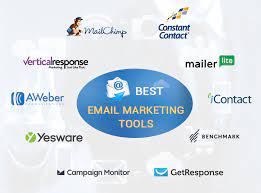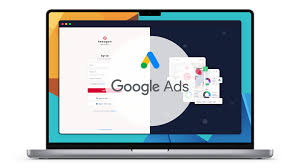Online Video Advertising: Engaging Audiences in the Digital Age
In today’s fast-paced digital world, online video advertising has emerged as a powerful tool for businesses to connect with their target audiences. With the rise of video platforms and the increasing popularity of streaming services, brands have recognized the immense potential of this medium to engage customers and drive conversions. Let’s explore why online video advertising has become an integral part of marketing strategies and how it can benefit businesses of all sizes.
Firstly, online video advertising offers a unique opportunity to capture viewers’ attention in a visually compelling and immersive way. Unlike traditional text-based ads, videos have the ability to convey emotions, tell stories, and create memorable experiences. By combining visuals, audio, and motion, advertisers can effectively communicate their brand message and establish a strong emotional connection with their audience.
Furthermore, online video advertising allows for precise targeting and reaching specific demographics. With advanced targeting options available on various platforms, businesses can ensure that their ads are shown to the right people at the right time. This ensures maximum relevance and increases the likelihood of conversions. Whether it’s age, location, interests, or browsing behavior, advertisers can tailor their campaigns to reach their desired audience segments.
Another significant advantage of online video advertising is its ability to generate higher engagement rates compared to other forms of digital advertising. Studies have shown that videos tend to capture viewers’ attention for longer periods compared to static images or text-based content. This increased engagement translates into higher brand recall and improved conversion rates.
Moreover, online video advertising provides valuable analytics and insights that enable advertisers to measure the effectiveness of their campaigns accurately. With detailed metrics such as views, click-through rates (CTRs), view durations, and conversions, businesses can gain valuable insights into viewer behavior and make data-driven decisions for optimizing future campaigns. This level of transparency allows advertisers to allocate their budgets more effectively and maximize their return on investment (ROI).
It’s worth noting that online video advertising is not limited to large corporations with substantial marketing budgets. Thanks to the accessibility and affordability of digital platforms, businesses of all sizes can leverage video advertising to boost their brand visibility and reach a wider audience. Whether it’s a short ad on social media or a longer-form video on YouTube, there are options available to suit every budget and marketing objective.
In conclusion, online video advertising has revolutionized the way businesses connect with their target audiences in the digital age. With its ability to engage viewers, precisely target demographics, generate higher engagement rates, and provide valuable analytics, video advertising has become an indispensable tool for brands looking to stand out in a crowded marketplace. Embracing this dynamic medium allows businesses to captivate audiences, drive conversions, and ultimately achieve their marketing goals in an increasingly competitive online landscape.
Frequently Asked Questions about Online Video Advertising
- What is meant by video advertising?
- Why use online video ads?
- How much does online video advertising cost?
- What is video advertising and example?
- What is online video advertisement?
- How can I do online video marketing?
What is meant by video advertising?
Video advertising refers to the practice of promoting products, services, or brands through the use of video content. It involves creating and distributing videos with the intention of reaching and engaging a target audience to generate awareness, interest, and ultimately drive desired actions such as making a purchase or subscribing to a service.
Video advertising can take various forms, including pre-roll ads that play before or during online video content, mid-roll ads that appear in the middle of a video, post-roll ads that are shown after the main video ends, and in-stream ads that are integrated within streaming content. These ads can be displayed on various platforms such as social media sites, video sharing platforms like YouTube, streaming services, websites, and mobile apps.
The purpose of video advertising is to capture viewers’ attention by leveraging visuals, audio, and motion to deliver a compelling message. Videos have the ability to convey emotions, tell stories, showcase products or services in action, and create memorable experiences for viewers. By engaging audiences through this dynamic medium, advertisers aim to build brand awareness, establish emotional connections with consumers, drive website traffic or app downloads, increase sales conversions, or achieve other specific marketing objectives.
Video advertising offers several advantages over other forms of advertising. It allows for creative storytelling and provides an opportunity for brands to showcase their unique selling propositions effectively. Videos can be tailored to specific target audiences using advanced targeting options available on digital platforms. Additionally, video advertising provides valuable analytics and insights into viewer behavior and campaign performance metrics such as views, click-through rates (CTRs), view durations, and conversions.
Overall, video advertising has become increasingly popular due to its ability to engage viewers in a visually compelling way while delivering key marketing messages. It has proven to be an effective tool for businesses of all sizes looking to reach their target audience effectively in today’s digital landscape.
Why use online video ads?
There are several compelling reasons why businesses should consider using online video ads as part of their marketing strategies. Here are some key benefits:
- Enhanced Engagement: Online video ads have the ability to capture and hold viewers’ attention more effectively than other forms of advertising. The combination of visuals, audio, and motion creates a captivating experience that can convey messages in a memorable and engaging way.
- Increased Reach: With the rise of video-sharing platforms and streaming services, online videos have become an integral part of people’s daily lives. By leveraging online video ads, businesses can tap into this vast audience and reach potential customers who may not be exposed to traditional advertising channels.
- Precise Targeting: Online video advertising platforms offer advanced targeting options that allow businesses to reach specific demographics based on factors such as age, location, interests, and browsing behavior. This precision targeting ensures that ads are shown to the most relevant audience, increasing the chances of generating conversions.
- Improved Brand Awareness: Video ads provide an excellent opportunity for businesses to showcase their brand identity and establish a strong presence in the minds of consumers. Through storytelling, visuals, and sound, brands can create a compelling narrative that resonates with viewers and helps build brand recognition.
- Measurable Results: One significant advantage of online video advertising is the availability of detailed analytics and insights. Advertisers can track metrics such as views, click-through rates (CTRs), view durations, and conversions to measure the effectiveness of their campaigns accurately. This data-driven approach allows for continuous optimization and better allocation of marketing budgets.
- Increased Conversions: Studies have shown that video ads tend to have higher conversion rates compared to other forms of digital advertising. The immersive nature of videos combined with strong calls-to-action can drive viewers towards taking desired actions such as making a purchase or signing up for a service.
- Cost-Effective Options: Online video advertising offers options for businesses with varying budgets. From short, low-cost ads on social media platforms to longer-form videos on popular video-sharing platforms, there are options available to suit different marketing objectives and financial capabilities.
In summary, online video ads provide businesses with a powerful tool to engage audiences, increase brand awareness, target specific demographics, measure campaign performance, drive conversions, and do so in a cost-effective manner. By leveraging the unique benefits of online video advertising, businesses can effectively communicate their messages and stand out in today’s competitive digital landscape.
How much does online video advertising cost?
The cost of online video advertising can vary significantly depending on several factors. Here are some key considerations that can influence the pricing:
- Ad Format: The type of video ad format you choose will impact the cost. Pre-roll ads, which play before a video content, tend to be more expensive than mid-roll or post-roll ads. Additionally, the length of the ad can also affect pricing, as longer videos may require a higher budget.
- Platform and Reach: Different platforms have varying advertising costs. Popular platforms like YouTube, Facebook, and Instagram often have higher rates due to their extensive user base and reach. The cost per view or impression will depend on the platform’s advertising model and competition.
- Targeting Options: Advanced targeting options allow you to reach specific demographics, interests, or locations. The more specific your targeting requirements are, the higher the cost may be as it requires more precise audience segmentation.
- Ad Placement: The placement of your video ad within a platform’s interface can affect pricing. For example, ads shown during peak hours or on high-traffic pages may have higher costs compared to less prominent placements.
- Ad Duration and Frequency: The length of your video ad and how frequently it is shown can impact costs. Longer videos or running ads more frequently may require a larger budget allocation.
- Ad Production: If you decide to create a professionally produced video ad with high production value, it may add to your overall costs. However, it’s worth noting that there are also options for creating more affordable and effective video ads using simpler formats or user-generated content.
It’s important to keep in mind that online video advertising costs are typically based on bidding systems (such as cost-per-view or cost-per-impression), where advertisers compete for available inventory within their target audience segments.
To get an accurate estimate of online video advertising costs for your specific campaign objectives and target audience, it is recommended to consult with advertising platforms, agencies, or media buying specialists who can provide detailed pricing information based on your requirements.
What is video advertising and example?
Video advertising refers to the practice of promoting products, services, or brands through video content. It involves creating and distributing videos with the intention of reaching and engaging a target audience to drive desired actions, such as making a purchase or subscribing to a service.
An example of video advertising is a pre-roll ad that plays before a YouTube video. Let’s say you are watching a cooking tutorial on YouTube, and before the video starts, an ad for a kitchen appliance brand appears. The ad showcases the brand’s latest blender model, highlighting its features and demonstrating how it can simplify cooking tasks. The goal of this video ad is to capture the viewer’s attention, create awareness about the product, and potentially influence them to consider purchasing the blender.
Another example is an in-stream video ad that appears while watching online streaming content. Imagine you are watching your favorite TV series on a streaming platform, and during a commercial break, an ad for a travel agency pops up. The video ad showcases breathtaking destinations and enticing holiday packages, encouraging viewers to book their next vacation with that particular travel agency.
These examples illustrate how businesses leverage video advertising to engage viewers in different contexts and platforms. By creating compelling videos that resonate with their target audience’s interests and needs, brands can effectively communicate their messages and influence consumer behavior.
What is online video advertisement?
Online video advertising refers to the practice of promoting products, services, or brands through video content distributed on digital platforms. It involves creating and sharing videos with the intention of reaching and engaging a specific target audience. Online video ads can take various forms, such as pre-roll ads that play before or during online videos, in-stream ads that appear within streaming content, or social media video ads that are displayed on platforms like YouTube, Facebook, Instagram, or TikTok.
These video advertisements are designed to capture viewers’ attention and deliver a brand message effectively. They often incorporate storytelling techniques, visual effects, music, and other creative elements to create an engaging and memorable experience for the audience. By leveraging the power of sight, sound, and motion, online video ads aim to convey information about a product or service in a compelling way that resonates with viewers.
Online video advertising offers several advantages over traditional forms of advertising. It provides businesses with the opportunity to reach a vast online audience at scale and target specific demographics based on factors like age, location, interests, or browsing behavior. Additionally, it allows for precise measurement and tracking of ad performance through analytics tools. Advertisers can gather data on metrics such as views, click-through rates (CTRs), view durations, and conversions to assess the effectiveness of their campaigns and make data-driven decisions for optimization.
Overall, online video advertising has become an essential component of marketing strategies due to its ability to engage audiences effectively in the digital realm. By leveraging the power of video content on various digital platforms and social media channels, businesses can increase brand visibility, drive traffic to their websites or landing pages, generate leads, and ultimately boost conversions.
How can I do online video marketing?
Online video marketing can be a highly effective way to promote your business and engage with your target audience. Here are some steps to help you get started:
- Define your goals: Determine what you want to achieve with your video marketing campaign. Is it to increase brand awareness, drive website traffic, generate leads, or boost sales? Having clear objectives will guide your strategy and help you measure success.
- Identify your target audience: Understand who your ideal customers are and what kind of content they would find valuable and engaging. This will enable you to create videos that resonate with them and address their needs or interests.
- Plan your content: Brainstorm ideas for videos that align with your goals and target audience. Consider different formats such as product demonstrations, tutorials, behind-the-scenes footage, customer testimonials, or storytelling videos. Develop a content calendar to ensure regular and consistent video production.
- Create compelling videos: Invest in quality equipment such as a good camera, microphone, and lighting setup if possible. However, even with basic equipment like a smartphone, you can create engaging videos by focusing on factors like clear audio, good lighting conditions, and steady shots. Be creative in capturing attention and delivering your message effectively.
- Optimize for platforms: Different online platforms have specific requirements for video formats and lengths. Tailor your videos accordingly to ensure they are optimized for the platforms where you plan to distribute them (e.g., YouTube, Facebook, Instagram). Consider subtitles or captions for accessibility and mobile-friendly viewing.
- Promote across channels: Once you have created your videos, promote them across various channels such as social media platforms (Facebook, Instagram, Twitter), email newsletters, blog posts, or even on your website’s landing pages. Leverage the power of cross-promotion to reach a wider audience.
- Engage with viewers: Encourage viewers to engage with your videos by asking questions or including calls-to-action (CTAs) that prompt them to like, comment, share, or subscribe. Respond to comments and engage in conversations to build a sense of community and foster relationships with your audience.
- Analyze and optimize: Monitor the performance of your videos using analytics tools provided by platforms or third-party software. Pay attention to metrics such as views, watch time, engagement rates, and conversions. Analyze this data to identify what is working well and make adjustments to improve future videos.
Remember that consistency is key in video marketing. Regularly producing high-quality videos will help build brand recognition and maintain engagement with your audience over time. Experiment with different types of content and strategies to find what resonates best with your target audience. With dedication and a well-executed video marketing plan, you can effectively promote your business online and achieve your marketing goals.




